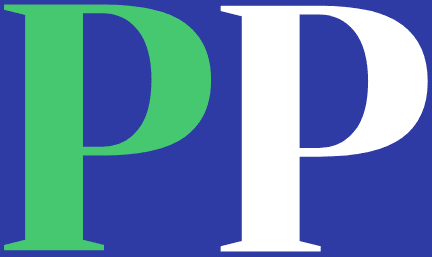Last updated Feb. 19, 2025 by Charles Zemub
A Home Equity Line of Credit (HELOC) presents a viable financial solution for homeowners wanting to leverage the equity built into their homes. A HELOC allows homeowners to borrow against their home equity, typically offering more favorable rates than other forms of credit. This article explores the intricacies of HELOCs, their benefits, potential challenges, and how they compare to alternative financing options.
Understanding HELOC
A HELOC is a type of revolving credit line secured by the borrower’s home. It operates similarly to a credit card, where a borrower can withdraw funds up to a predetermined credit limit during a set timeframe known as the draw period. However, unlike a standard credit card, a HELOC offers lower interest rates largely because it is secured by real estate.
The key characteristics that define a HELOC are:
- Variable Interest Rates: Most HELOCs have variable interest rates that fluctuate based on the prime rate or an index rate.
- Draw and Repayment Periods: Usually, the draw period lasts about 5 to 10 years, during which you can borrow from the line, with interest-only payments often required in this phase. This is followed by a repayment period, generally 10 to 20 years, where you pay back both the principal and interest.
- Credit Limit: Determined by the lender, usually calculated as a percentage of the home’s appraised value minus the remaining mortgage balance.
Benefits of HELOCs
Flexible Borrowing
HELOCs provide borrowing flexibility unmatched by other loan products. Homeowners can take out as much or as little money as needed, making it ideal for ongoing expenses or projects like home renovations.
Interest-Only Payments
During the draw period, many HELOCs require only interest payments. This feature eases the borrower’s initial financial burden, allowing the primary payments to be deferred to the future.
Potential Tax Benefits
Interest paid on a HELOC may be tax-deductible if the funds are used for home improvements, subject to certain IRS conditions.
Lower Closing Costs
Compared to traditional loans, HELOCs often come with lower or even no closing costs, providing additional savings upfront.
Competitive Interest Rates
Secured by the home, HELOCs typically offer lower interest rates than unsecured credit options, such as personal loans or credit cards.
Potential Challenges of HELOCs
Fluctuating Interest Rates
Variable interest rates can lead to significant changes in monthly payments, impacting budgeting and financial planning.
Risk of Over-Borrowing
The accessible nature of HELOCs might tempt homeowners to borrow beyond their means. It is crucial to exercise discipline and ensure borrowed amounts are within a manageable repayment capacity.
Home as Collateral
As the home is secured against the credit line, failure to meet repayment obligations could result in foreclosure.
Impact on Credit Score
Drawing a large portion of the available credit can affect your credit utilization ratio, potentially lowering your credit score.
Balloon Payments
Once the draw period concludes, the repayment phase might significantly increase monthly payments, which can strain finances if not anticipated.
HELOCs vs. Home Equity Loan
While both HELOCs and home equity loans leverage home equity, they differ significantly:
- Structure: A HELOC is a revolving credit line, whereas a home equity loan is a lump-sum loan.
- Payment Terms: Home equity loans have fixed monthly payments, often making them preferable for borrowers who require predictable budgeting.
- Interest Rates: Home equity loans generally offer fixed rates, providing consistency, unlike the variable rates in HELOCs.
Getting a HELOC: Eligibility and Application Process
Eligibility Requirements
To qualify for a HELOC, you generally need:
- Sufficient Home Equity: Most lenders require substantial equity, generally around 15-20%.
- Good Credit Score: A higher score enhances the likelihood of approval and favorable terms.
- Consistent Income: Demonstrating the capacity to handle repayments is crucial.
Application Process
- Assessment of Home Equity: A professional appraisal determines your home’s market value.
- Documentation: Prepare necessary documentation, such as proof of income, employment records, and existing debts.
- Select a Lender: Shop around for lenders to compare interest rates and terms.
- Submit Application: Present the gathered documents and completed application to the chosen lender.
- Review and Approval: The lender will assess your financial standing and offer terms based on the evaluation.
Managing Your HELOC
Effective management of a HELOC involves disciplined borrowing and strategic financial planning, ensuring flexible access to funds aligns with financial goals.
[Insert short answer here]
✓ Short Answer
A Home Equity Line of Credit (HELOC) is a secured, revolving credit line allowing homeowners to borrow against their home’s equity at variable interest rates. It offers a draw period for accessing funds and a repayment period following that. HELOCs provide flexibility, often featuring competitive interest rates and potential tax benefits if used for home improvements. However, they come with risks such as fluctuating rates and the potential for over-borrowing, which may lead to foreclosure if repayments aren’t managed properly. Comparatively, home equity loans provide a lump-sum loan with fixed payments, differing significantly in structure and interest terms.
Conclusion
A HELOC serves as a flexible and potentially cost-effective financing option for homeowners seeking to leverage their home equity. Whether pursuing home renovations, consolidating debt, or addressing unexpected financial needs, a HELOC can provide accessible funds at competitive rates. However, it’s essential to understand the responsibilities and risks involved, particularly concerning fluctuating interest rates and the implications of using your home as collateral. Careful planning, prudent borrowing, and thorough shopping around for favorable terms are fundamental to reaping the benefits of a HELOC effectively.
FAQs
What is the difference between a HELOC and a second mortgage?
A HELOC is a revolving line of credit with variable interest rates, usually accessed as needed, whereas a second mortgage, or home equity loan, provides a fixed amount with fixed interest rates. Both are secured by your home.
Can I use a HELOC for anything?
Technically, you can use HELOC funds for any purpose, but interest is only tax-deductible if used for significant home improvements.
How is a HELOC interest rate determined?
HELOC rates are typically variable and based on an index, such as the prime rate, plus a margin.
What happens if I sell my home with an outstanding HELOC balance?
If you sell your home, the proceeds must first pay off the outstanding balance on your HELOC, after which any remaining equity is disbursed to you.
How can I access the funds from my HELOC?
Since HELOCs function like credit lines, you can access funds via checks, credit/debit cards linked to the account, or through online transfers, depending on the bank’s terms.



